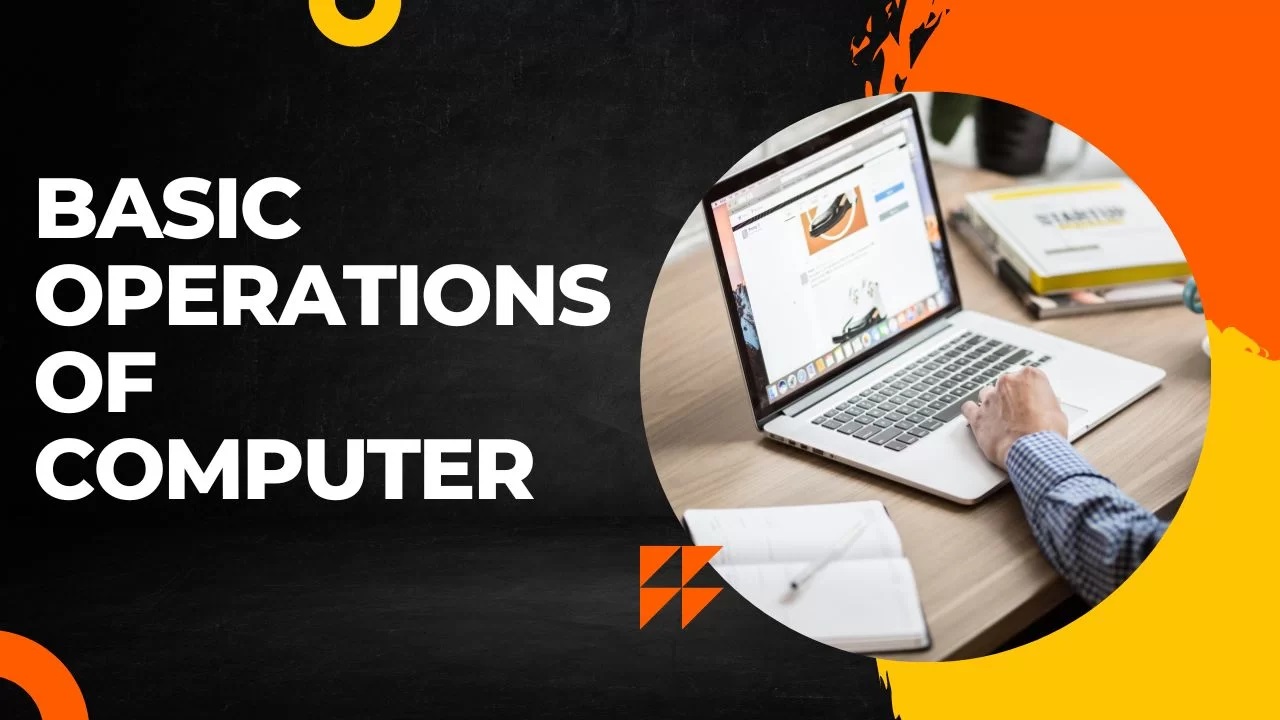What Are the 5 Basic Operations of a Computer System?
The questions about the basic operations of a computer may confuse you at first glimpse as it is a versatile machine doing numerous tasks such as playing awesome games, useful calculations, huge storage, quick retrieval, processing spreadsheets, creating and managing documents, playing songs and movies, and whatnot. So, among this huge list of tasks a computer performs, how do you identify which are basic computer operations?
Rather than drifting away with the huge list of wonders that computers do every day, you should consider the aspect of what the question is expecting. This is a question from the Computer Fundamentals chapter, specifically about Computer Systems.
Now that you identify the area this question is targeting, it will be easier to hit the answer. It’s asking about the basic operations of a computer system.
Table of Contents
5 Basic Operations of a Computer System With Examples
The basic operations of a computer system are as follows:
- Inputting
- Processing
- Outputting
- Storing
- Controlling

Input Unit
Inputting is a basic operation of a computer system. This is the act of feeding the data and instructions to the computer (by computer here, it means the processing unit).
A computer system consists of different functional units, and the input unit performs the operation of Input. By inputting, you should understand that it is to send data and/or instructions to the computer in the required format. Information and programs are entered into the computer through Input devices such as the keyboard, disks, or through other computers via network connections or modems connected to the Internet.
The input device also retrieves information from disks. Because computers work with bits, there should be some mechanism for the CPU to make data understandable (the process is called encoding), and also, the information produced by the CPU must be converted to a human-readable form (called decoding). Input Unit devices take care of encoding.
The devices that help you input data and instructions are known as Input Devices. Keyboard, Mouse, Light Pen, JoyStick, Scanners, Microphone, etc are some examples of input unit devices. The devices that can send data directly to the CPU or that do not need to encode it before sending it to the CPU are considered direct entry input devices, such as scanners. Devices such as a keyboard that require encoding data so that it is in the form a CPU can understand are Indirect Entry Input Devices.
Processing Unit
The task of performing calculations and comparisons is known as processing.
The Computer System unit responsible for processing is ALU (Arithmetic and Logical Unit). ALU is the place where the actual execution of the instructions takes place during the processing operations. All calculations & comparisons are made in the ALU. The data and instructions stored in the primary storage are transferred to it when required. ALU may produce Intermediate results and store them in the memory, which is also transferred back to the ALU for the final processing. After processing is completed, the final results are sent to storage units from ALU.
Output Unit
This unit takes care of receiving processed information from the processing unit and presents it to the user in a suitable form.
A computer produces results in binary form, and the output unit decodes them to make them usable to users. The devices that can output information from a computer are known as output unit devices. Monitors, Speakers, and Projectors are soft output devices, whereas printers and plotters produce hard copy output. Soft copy output is temporary or available only as long as the output device is turned on. Contrary to these is hard copy output, which is permanent. The printout on paper was not lost because the printer was turned off!
Storage Unit
Before actual processing starts, data & instructions entered into the computer must be stored somewhere inside the computer. Similarly, results produced by the computer are required to be stored before they are passed to the output unit. The intermediate result produced by the computer must also be stored for further processing. Thus, storage units in a computer system are vital.
It can be internal or external storage based on whether the storage device is inside the main machine. Similarly, whether the storage device works close to the CPU or works as backup media, they can be primary or secondary storage. Primary storage is also called primary memory. Other names, such as backup storage or secondary memory, know secondary storage. For storage purposes, a computer system may have different devices such as registers, cache, RAM/ROM, flash, magnetic disks, optical disks, and so on.
Control Unit
ALU dose does not know what should be done with the data; likewise, the output unit does not know when the result should be displayed. By selecting, interning, and seeing to the execution of the program, the CU is able to maintain order and direct the operations of the entire system. CU doesn’t perform any actual processing on data yet it is known as a central nervous system for the comforts of the computer. It manages and coordinates the entire system. I hope this discussion helps you and makes you select the correct answers for your exam.
